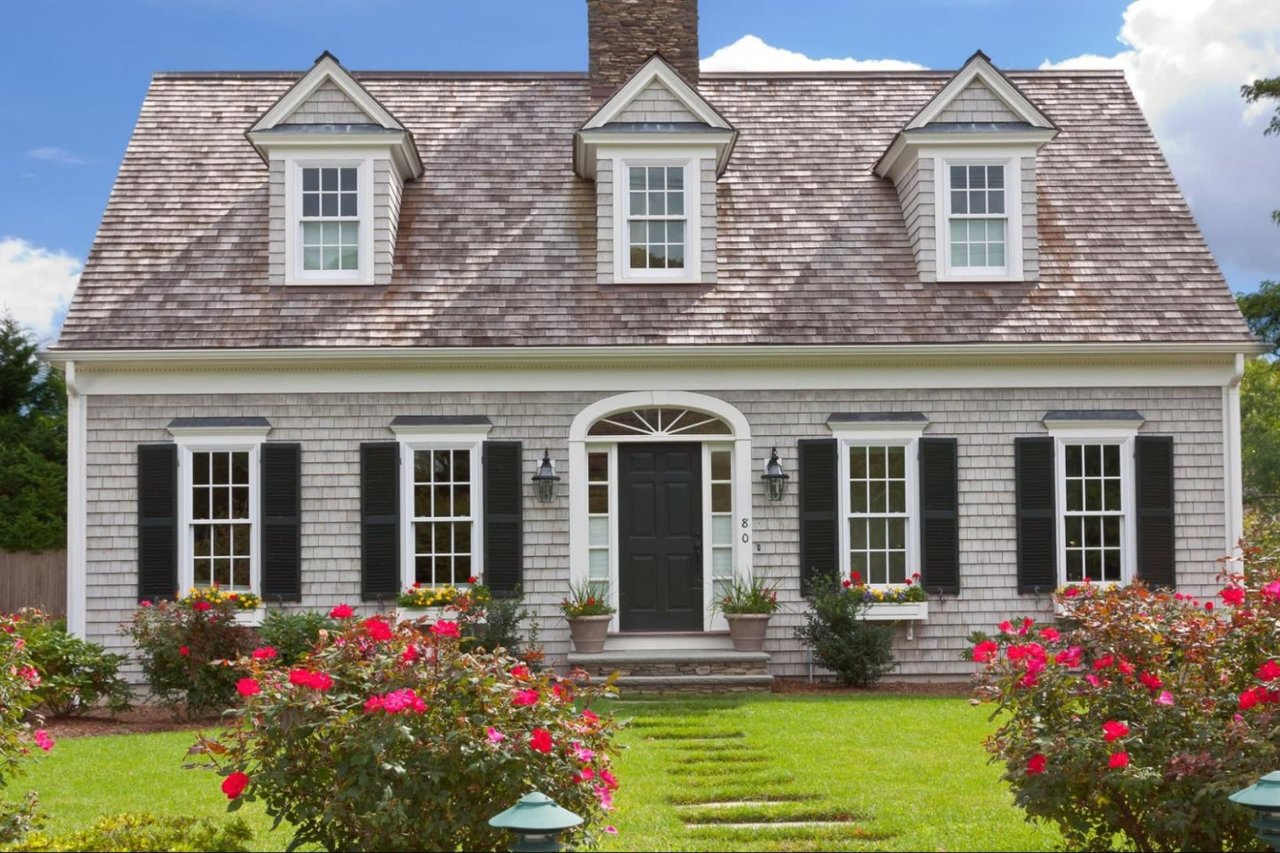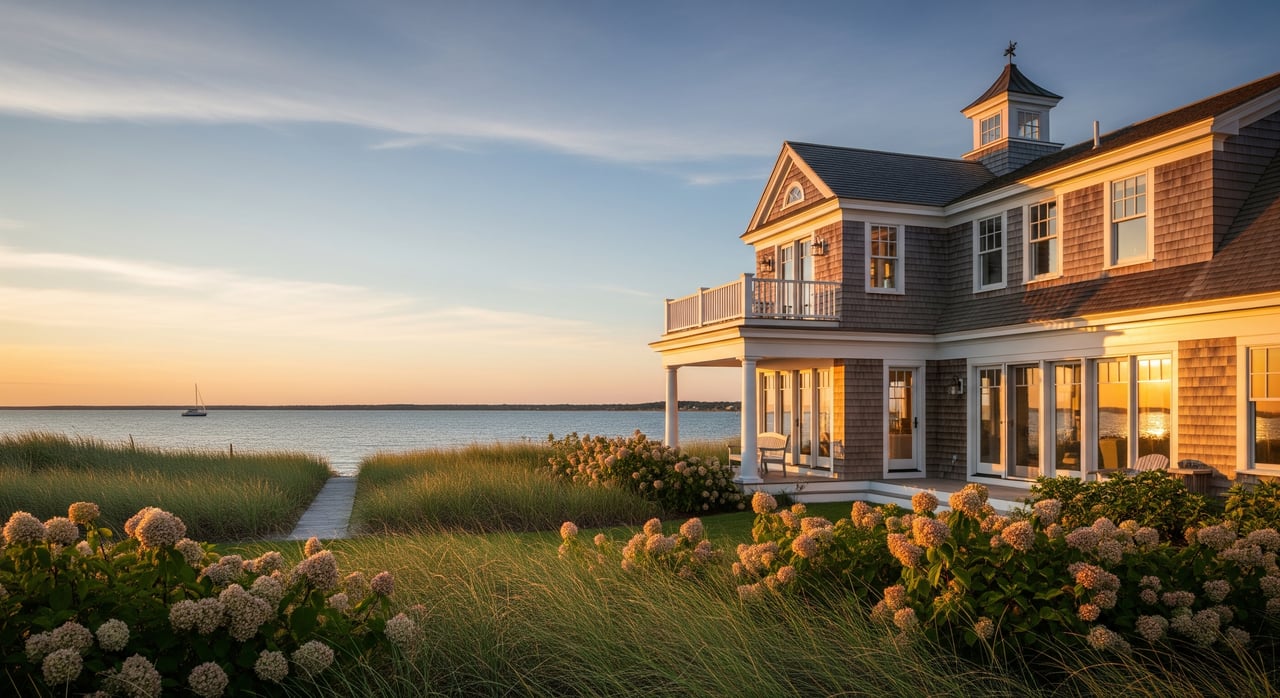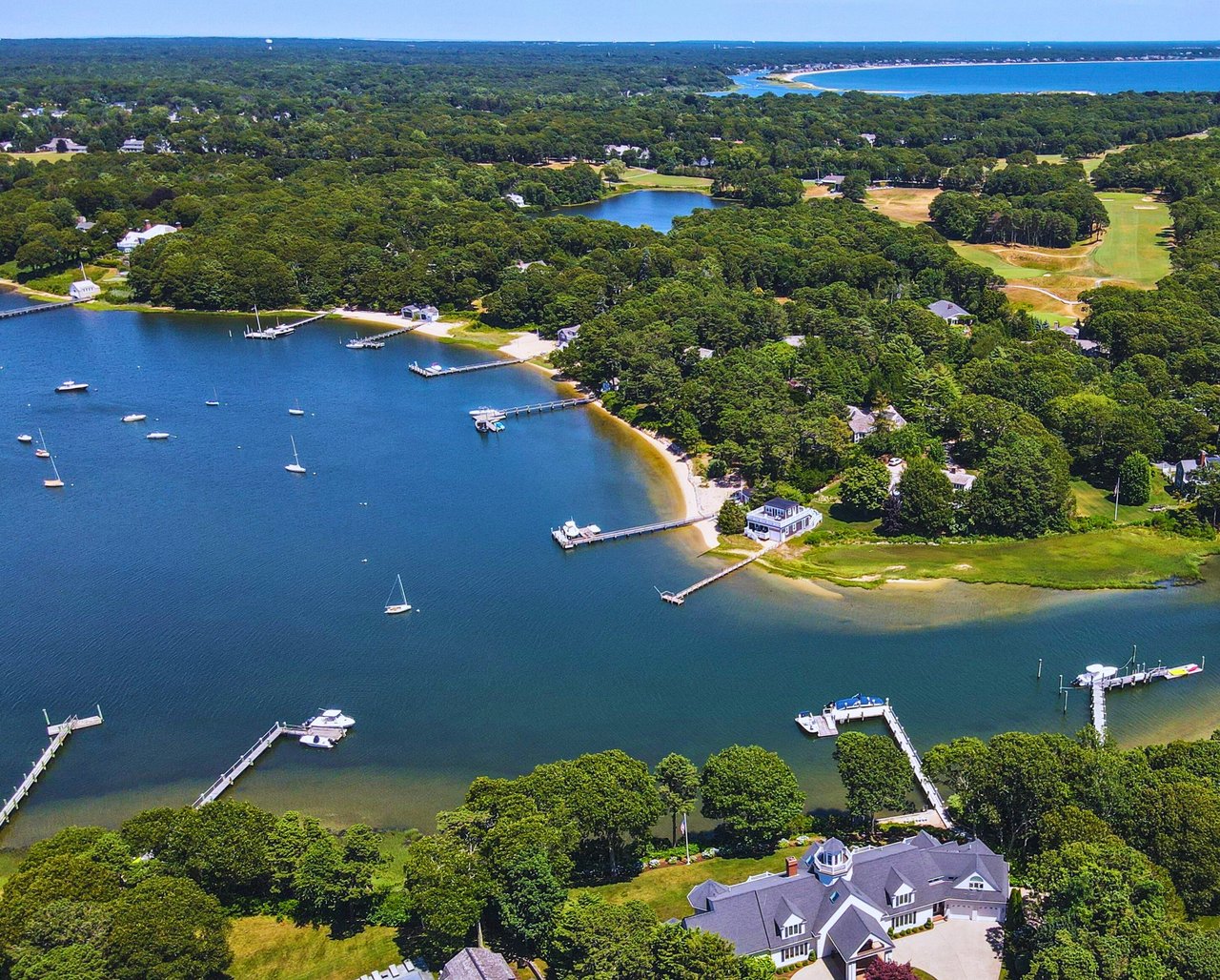As far as architectural flair goes, Cape Cod-style homes are as iconic as they come. Despite being more than 400 years old, this architectural style has continued to capture the hearts of homeowners time and time again. While other architectural styles may feature intricate and extravagant designs, Cape Cod houses boast a simplistic feel without losing the charming, classic cottage ambiance that has kept this style so well-loved throughout the years.
Prominent features of Cape Cod architecture
1. A symmetrical layout
Traditional renditions of a Cape Cod home have a uniform, symmetrical facade and layout complete with a center hallway and perfectly measured spaces on either side. Its rectangular shape allows for sharp, precise angles and lines, creating a clean-edged structure.
2. Steep pitched roofs with gables
One feature of Cape Cod homes that can still be seen today is their high, pitched roofs. This particular characteristic is easy to distinguish and is often elevated with gabled rooftops, an intricate touch that adds to the timeless look of the home.
3. A large chimney in the center of the home
The standard full Cape Cod includes a substantial chimney placed directly in the heart of the home. Several fireplaces can provide much-needed heat to every room of the house this way. The centralized chimney is another notable characteristic of Cape Cod architecture.
4. Shingle exterior siding
While aged shingles are a distinguishing trait of traditional Cape Cod homes, most newer versions of this style come equipped with brick and stone. Shingles are often found on the roof and sides of the home, which only contributes to the style’s charming appeal.
While the Cape Cod architectural style has evolved and modernized over the years, there are several unifying features of today’s Cape Cod homes. Many of the homes found in Cape Cod, MA continue to sport the large, sprawling chimneys, shingled exteriors, double dormers, and steep, pitched roofs that are characteristic of the traditional style.
Though many Cape Cod homes still boast the symmetrical, one-story design this style is known and loved for, newer Cape Cod builds are evolving to accommodate the modern homeowner. Today’s Cape Cod homes generally fall into three categories: full Cape, three-quarter Cape, and half Cape.
As you might imagine, a full Cape home is designed with the original style in mind and incorporates the symmetrical, one-story design and centralized chimney. Three-quarter Cape and half Cape-style homes are smaller versions of the Full cape and often aren’t symmetrical. Instead, they sport a front entrance and chimney that have shifted away from their original central location toward the side of the home. Today’s homeowners may also find themselves in a Cape Cod-style home with more than one original story and a wide, off-center front porch.

The history behind the Cape Cod style
True to its timeless appearance, the Cape Cod architecture style originated in the late 17th century. Early Puritan settlers brought the architectural concept of a simplistic, English cottage to Massachusetts and adapted the design to withstand the bitter winters that come with living in New England, thus creating what would one day be known as the well-loved Cape Cod architectural style.
The Cape Cod’s high roof and shingle exterior were created to withstand the pressure of snowfall and keep out the elements, and its centralized fireplace was implemented with warmth in mind. It wasn’t until the 20th century that Cape Cod homes were reintroduced as a modern home style, thus ushering in the widespread alterations to the original style that can be seen in Cape Cod homes today.
Latest Cape Cod style trends
Cape Cod homeowners who are looking to elevate their charming homes have various trendy possibilities to choose from. On the exterior, some owners are replacing shutters with trim and molding to upgrade the home’s look while others are adding or widening dormers for extra space. Cape Cod homeowners might also consider replacing their siding with different materials. Mudroom and garage additions have also become popular since both add more square footage to these already-sprawling homes.
How to decorate your Cape Cod home
The Cape Cod home’s simplistic look provides an excellent backdrop for a variety of decor styles. This can mean something as simple as painting your home’s exterior shutters, trim, pillars, door, or other noteworthy features in an unexpected shade. Get inspired by the stunning waters of Cape Cod and consider various shades of green and blue.
One dramatic but simple decorative option that can take your Cape Cod home to the next level is painting your chimney. Since the chimney is one of the most noteworthy features of your Cape Cod home, giving it a spruce-up will surely catch the eye of neighbors and guests. You can find quality exterior paints at locally owned businesses right in the Cape Cod area.
Regardless of whether your Cape Cod home is a full, half, or quarter Cape, you’ll have plenty of room to enhance your backyard. Infuse your outdoor living space with the same amount of personality as the exterior and interior of your Cape Cod home to create a seamless, classic design that’s sure to garner compliments from all your guests.
Create a back patio complete with vintage furniture, or if your home is located on the water, consider a covered porch for sitting outside and enjoying a glass of freshly squeezed lemonade as you take in nature’s beauty on a hot summer day. Adding a white picket fence around the edge of your property enhances the traditional look that Cape Cod homes naturally exude.
You have just as many design options for the interior of your Cape Cod home. Neutral paint shades pair well with the simplistic vibe of Cape Cod homes and provide a great backdrop in the event that your decorative tastes change over the years. However, if you’d like to evoke Cape Cod’s coastal roots, consider painting the walls in shades of soft blues and greens. Hanging ocean-inspired artwork on the walls of your home is another way to bring the beauty of Mother Nature inside and enhance the New England vibe of your Cape Cod, MA home.
What makes a Cape Cod home right for you?
Because of their simplicity, Cape Cod homes are perfect for all kinds of homeowners regardless of taste. This versatile style can outlast any latest architectural trend, making it a timeless piece of history in which you can make years of memories.
Those who are looking for a charming yet sophisticated property will find themselves head over heels for the beautiful homes for sale in Cape Cod, MA. To complete the picturesque living experience, many Cape Cod cottages are waterfront properties, which only elevates the charming ambiance of these homes. If you want classic luxury with a streamlined look that can weather decades of home design trends, a Cape Cod home may just be the right fit for you.
Cape Cod architecture is a classic, all-American style that will continue to drive the design market. With their sprawling roofs, enormous chimneys, and crisp, clean exterior, Cape Cod homes provide a lavish living experience without the flashy, modern embellishments of other architectural styles.
Are you looking at Cape Cod cottages for sale? Hoping to snag a waterfront property in Cape Cod? Look no further than luxury real estate specialist Robert Kinlin for all of your Cape Cod real estate needs. With over 30 years of realtor experience in the Cape Cod area, Robert has the kind of insider knowledge that can facilitate a smooth home-buying experience from start to finish.
Are you looking at Cape Cod cottages for sale? Hoping to snag a waterfront property in Cape Cod? Look no further than luxury real estate specialist Robert Kinlin for all of your Cape Cod real estate needs. With over 30 years of realtor experience in the Cape Cod area, Robert has the kind of insider knowledge that can facilitate a smooth home-buying experience from start to finish.
Due to Cape Cod’s growing popularity, the local market is heating up more than ever. Contact Robert Kinlin before you miss out on the home of your dreams!



